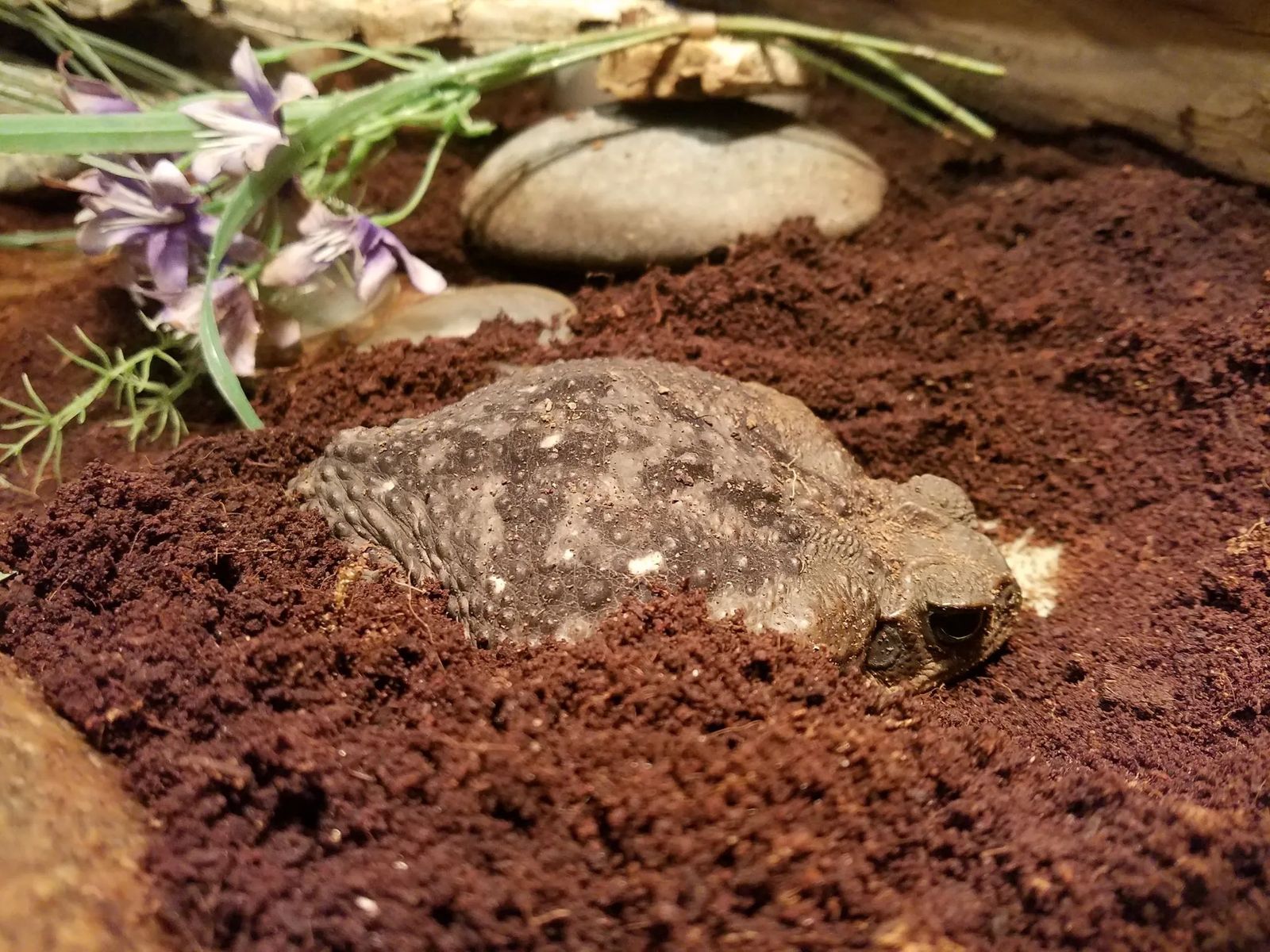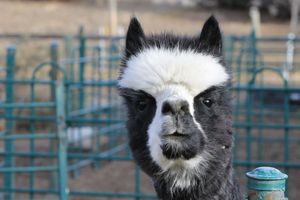
Cane Toad
Rhinella marina
Cane toads, otherwise called marine toads, or giant toads are the world’s largest species of toad and can weigh up to three pounds. They were originally found in the Rio Grande Valley of Texas south to central Amazon and southeastern Peru but today can be found in many other places. They were introduced to the Caribbean Islands, south Florida, the Hawaiian Islands, and Australia’s east coast and are considered one of the one hundred worst invasive species worldwide by the Invasive Species Specialist Group. The cane toad has a greyish-olive brown color on their dorsal skin (or their back) with many warts ending with deep brown caps. Their ventral skin (or their belly) tends to be a more whitish-yellow color with deep brown speckles and is more granular. They also have two huge, large glands to go from behind their ears to their lower backs that are filled with their poisonous bufotoxins. They will release this poisonous toxin from their skin as a liquid when they are confronted by a predator and if a predator tries to eat them it will make them feel extremely sick. Cane toads are considered opportunistic omnivores, which means they will eat anything they have access to, but will rely on finding food by movement, like flies or insects.
Click HERE for a Cane Toad Activity Sheet!
Our Current Resident
Cheech, Female - Born October 1, 2016
Cheech has lived at ZooMontana since 2016 and like other cane toads she is also poisonous, so we are extremely careful around her and always wear gloves. Cheech’s habitat is in the indoor education building near the gift shop. Cheech is often sitting in her water bowl and or buried under some dirt, but if you cannot find her in her habitat, she might be hiding.
Taxonomy
- Kingdom: Animalia
- Phylum: Chordata
- Class: Amphibia
- Order: Anura
- Family: Bufonidae
- Genus: Rhinella
- Species: Rhinella marina
Animal Facts
Omnivore: mainly eat insects, other frogs, small reptiles and mammals, birds, and plants
Population Status: currently listed as Least Concern
Habitat: forested areas with semi-permanent water nearby
Activity: nocturnal- mostly active during the night

















































